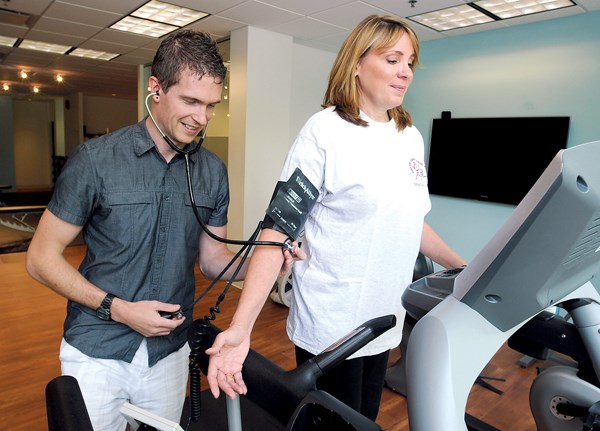Whether you are recovering from an injury or made the decision to become more active, getting back into fitness can be easy with the right tools.
Dr. Kevin McLeod, an internal medicine specialist and head of the Cardiac Rehab and Cardiometabolic program for the North Shore health region, says there are generally two types of people getting back into fitness.
There are those with a high level of baseline fitness who sustain an injury, so their proccess of returning to fitness would be specific to that injury, says McLeod. "They have to work with somebody who has advice on sports medicine or a good (kinesiologist), or physio and sort of recoup from that specific injury."
The second group consists of people who are not fit at this time in their life.
"For them first and foremost you want to make sure that they're safe to actually get back into exercise," says McLeod, who also helps run Liberation Fitness, a health management clinic in North Vancouver. He says those people should focus on a gradual reintroduction. "People who haven't done anything for a really long time, its not unreasonable that they sit down with their doctor or at least a trainer who has experience in dealing with those sorts of people."
Matt Conway, a kinesiologist and clinical exercise specialist at Liberation Fitness, also recommends talking to a professional before starting out.
“If you’re ever worried or wondering about whether or not you need to return to fitness, talk to your general practitioner,” says Conway. “They’ll have a good idea as to whether or not individuals can get back into it.”
And when starting out, some muscle soreness is to be expected.
“You are going to be achier when you first start off, you shouldn’t be in excruciating pain. You should expect moderate tightness and some aches and pains as you go along, that’s delayed onset muscle soreness, that’s common, that’s totally normal.”
McLeod says not to let minor aches stop you, but do be aware of any warning signs.
“If you’re really short of breath with activity,” he says. “If you’re getting any type of chest discomfort or funny feelings in your chest or palpitations, don’t ignore that.”
Bad joint pain can also be a warning sign of over exertion.
“Use your common sense, if something doesn’t seem right, there’s nothing wrong about going and asking somebody,” says McLeod.Returning to activity may result in some minor aches and pains, but you shouldn't be in excruciating pain. McLeod says not to let minor aches stop you, but do be aware of any warning signs. "If you're really short of breath with activity; if you're getting any type of chest discomfort or funny feelings in your chest or palpitations, don't ignore that."
Bad joint pain can also be a warning sign of over exertion. "Use your common sense, if something doesn't seem right, there's nothing wrong with going and asking somebody," says McLeod.
Both Conway and McLeod recommend starting out slowly and gradually gradually building.
"Plan just three days a week, 10 minutes a day, it sounds like next to nothing and most trainers out there will say there's no benefit with that, but it's really just getting the person back into the mindset," says McLeod. "After a couple of weeks, go to 15 minutes, and then 20 minutes, and 25, and try to get to that 30-minute mark ultimately five days a week."
When getting back into fitness, doing an exercise you enjoy and going with a friend will give you more reason to continue, says McLeod.
“If you don’t enjoy going to the gym, you’re never going to stick with it,” he says. “It doesn’t matter again what you do but I tell people you want to push yourself enough that you’re breaking into a light sweat. If you go for a walk along the seawall in West Van and at the end of it you haven’t felt at all short of breath and you haven’t got at least a little bit of a sweat going, you’re not going to get a lot of benefit.”
McLeod recommends doing a "talk test’ to determine if you’re pushing yourself enough.
“If you’re able to chat away while you’re walking on the seawall, you’re probably not pushing yourself enough,” he says. “You probably want to push a little bit harder to where it would be uncomfortable from a breathing point of view to carry on that conversation but you’d still complete a sentence if you had to.”
Lack of motivation can be a difficult barrier to overcome when returning to any kind of fitness. Conway says having the right atmosphere and surrounding yourself with people who are in a similar situation can be a good motivator.
“Group fitness can be good when individuals are first starting out because you have other people who are doing it along side you,” he says. “Just understanding other individuals going through the same motivational issues can be at least a little bit relieving and so you’re more able to adhere to the exercise programs when you know other people are going through the same thing as you.”
Conway says helping individuals set realistic goals and find some longevity is key.
“Its amazing what an individual can do, if I take them from one month to three months, just having somebody whose there to be able to set those specific goals in place, its amazing where they can go,” says Conway.



